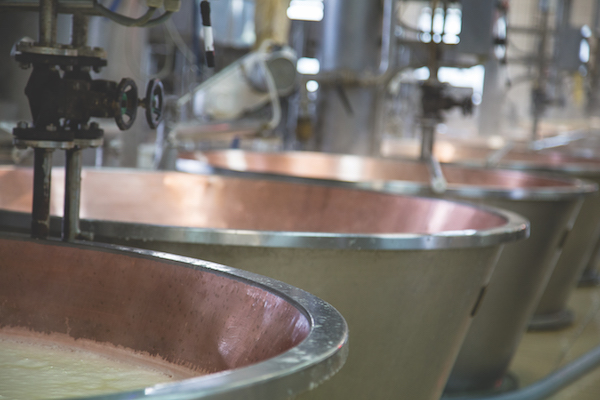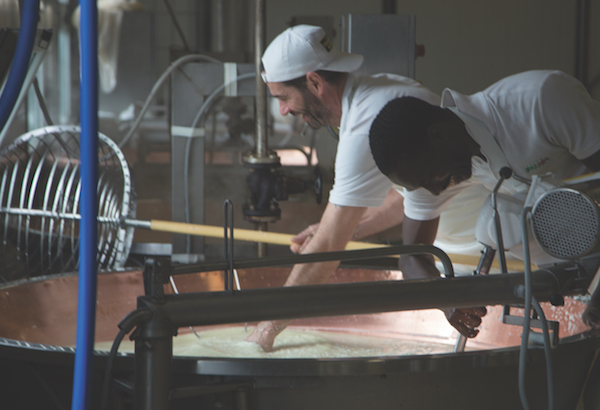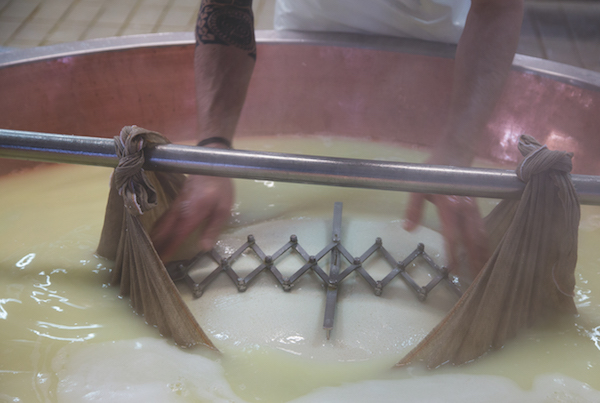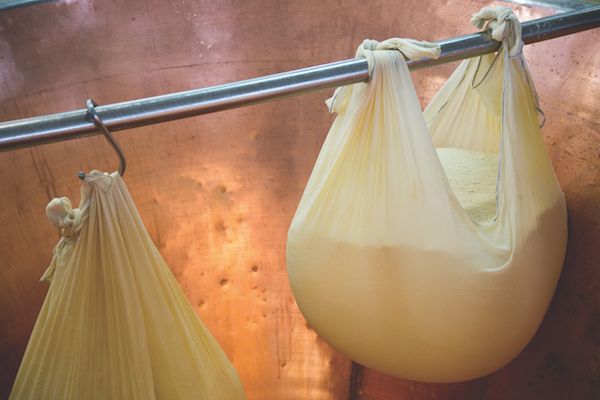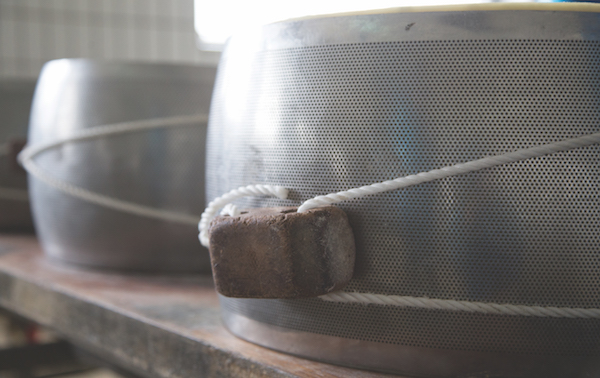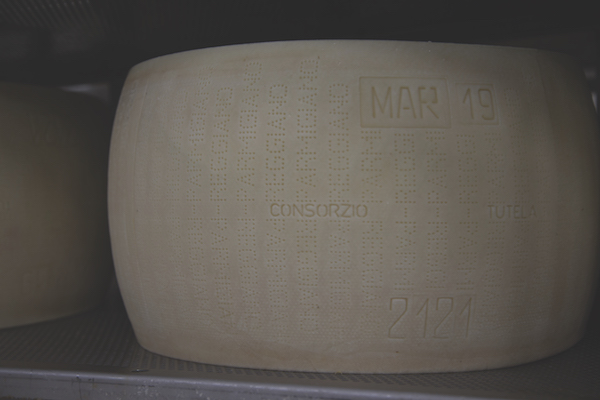Have you ever wondered how Parmesan is created? Wonder no more! Chris Allsop discovers the process behind the making of Italy’s favourite cheese
1 To start the Parmesan making process the milk is steamed in shallow, copper lined vats. The cream is taken away to make butter and the remainder slowly separates into curds and whey after the addition of animal rennet and a microbe-rich starter.
2 The spino is introduced to keep the curd grains small while they cook, before they are allowed to settle and coagulate at the bottom of the vat.
3 When the curd has settled, the nascent cheese must then be gently lifted out of the vat and separated into two ‘twin’ cheeses.
4 The twin cheeses are then suspended in cheesecloth to drain off any excess liquid. If there is not enough to make twin cheeses the single cheese is inscribed with an ‘M’, to denote that it is a ‘male’.
5 The cheese is tightly bound to produce its traditional cylindrical shape. This is also the stage at which their plastic cummerbunds are attached. These are marked with information about the cheese.
6 When the cummerbund is removed, the markings on the cheese remain. Here we can see the identification of authenticity, the cheese’s date, and the number of its dairy.
See behind the scenes of Parmesan making at the Sant Stefano Dairy here and find out more about Parmesan in Italy here

